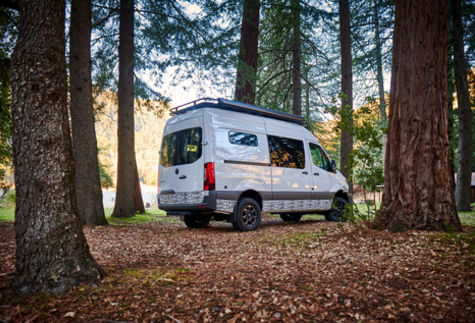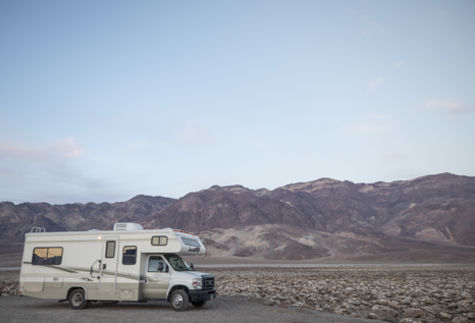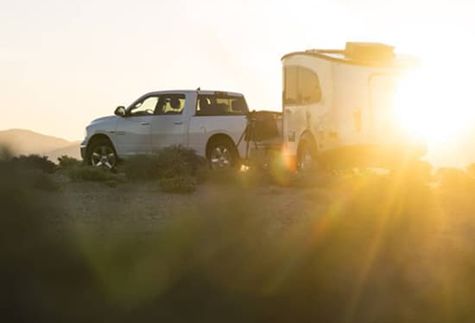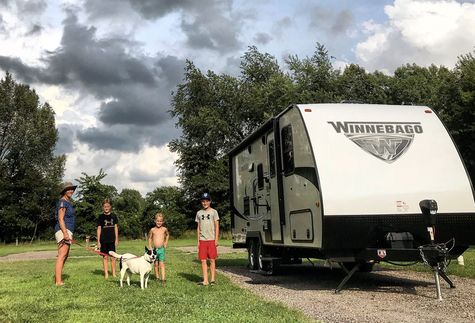One route that beckons RVers across the South is the Natchez Trace Parkway, a 444-mile drive through three states — Mississippi, Alabama, and Tennessee— and 10,000 years of history.
The National Park Service writes: “The Parkway was completed in 2005 and now covers one of the largest geographic ranges of any unit in the National Park System. The Parkway corridor, which spans five degrees of latitude, includes 52,000 acres of scenic, natural, cultural, and historic resources representing a variety of southern landscapes.”
Construction on the Natchez Trace Parkway began in 1938 as a Civilian Conservation Corps project during the Great Depression. It forms a northeastern route from Natchez, MI, to Nashville, TN. Along this route, there are 163 overlooks and parking areas, over 1,000 miles of landscaped road shoulders, and 485 bridges.
The parkway follows one of the oldest transportation routes in North America, with its human use dating back 10,000 years.
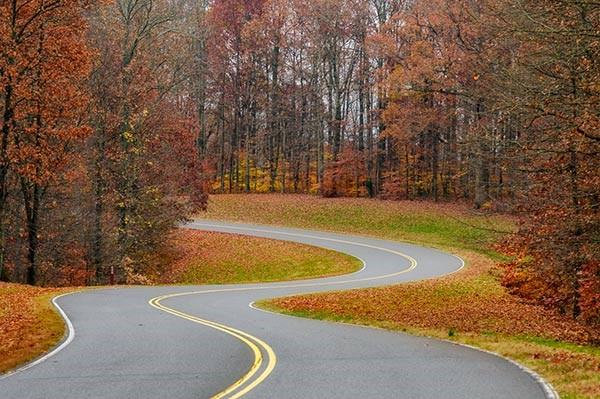
The Old Trace was also used by everyone from settlers to traveling preachers. “General Andrew Jackson used the Old Trace for moving volunteer militia and regular army troops during the War of 1812,” the National Park Service writes, noting that Civil War battles took place in and around the Old Trace corridor. With so much history taking place along its route, the Natchez Trace Parkway is loaded with historical sites, museums, and other attractions, including:
- Elvis Presley Birthplace in Tupelo, Mississippi: Visitors can tour the house where Elvis Aaron Presley was born in Tupelo, on January 8, 1935, to Vernon and Gladys Presley. The two-room house was built by his father, grandfather, and uncle. Nearby campgrounds include:
- Ivy Green, the Helen Keller Birthplace and Home in Tuscumbia, Alabama: Helen Keller was born healthy on June 27, 1880. When she was 19 months old, she was stricken with a severe illness that left her both blind and deaf. But Helen persevered and worked closely with her teacher, Anne Sullivan, and learned to communicate via sign language, to read and write in Braille, to touch-lip read, and to speak.
In 1904 Helen graduated cum laude from Radcliffe College and, with Anne Sullivan at her side, dedicated her life to improving the conditions of blind and deaf-blind people around the world. Each year on the last weekend of June, the Helen Keller Festival is held in Tuscumbia to commemorate her lifetime of achievements. Nearby campgrounds include: - Meriwether Lewis Site at Milepost 385.9: This site includes a monument and gravesite for Meriwether Lewis, who was appointed Governor of the Upper Louisiana Territory a few years after his famous expedition with William Clark to explore the upper reaches of the Missouri River and beyond. Lewis died along the Natchez Trace in 1809. Nearby campgrounds include:
- Museum of Mississippi History and the Mississippi Civil Rights Museum in Jackson: These two museums are interconnected and take visitors through the full spectrum of Mississippi history as well as the state’s role as ground zero in the U.S. Civil Rights Movement. The Museum of Mississippi History highlights the complex societies of Native American people, the exploration and settlement of Europeans and enslaved Africans, and the transition from a territorial period to statehood. Nearby campgrounds include:
- Natchez Museum of African American Culture and History in Natchez, Mississippi: This museum documents the role of Natchez in the Civil Rights Movement. The museum also produces a Natchez Civil Rights Trail map that lists over 20 historical sites for driving tours. Nearby campgrounds include:
- Owl Creek Mounds in New Houlka, Mississippi: Owl Creek Mounds, protected by the U.S. Forest Service, is an important Native American ceremonial site. The mounds were built and used by farming people belonging to the Mississippian culture between A.D. 1000 to 1500. The archaeological site includes two large mounds, walkways, and interpretive panels. Nearby campgrounds include:

- President James K. Polk Home and Museum in Columbia, Tennessee: James K. Polk, the 11th President of the United States from 1845 to 1849, expanded the borders of the United States to the Pacific Ocean, added three states to the Union, started the Naval Academy, commissioned the Washington Monument, and issued the country's first postage stamp, according to a historical report on NatchezTraceTravel.com. Nearby campgrounds include:
- Vicksburg National Military Park in Vicksburg, Mississippi: This park commemorates the campaign, siege, and defense of Vicksburg during the Civil War. The park contains over 1,330 monuments, a restored Union gunboat, and a National Cemetery where 17,000 Union soldiers are buried. Nearby campgrounds include:
The full history of the Natchez Trace Parkway can be viewed here.

